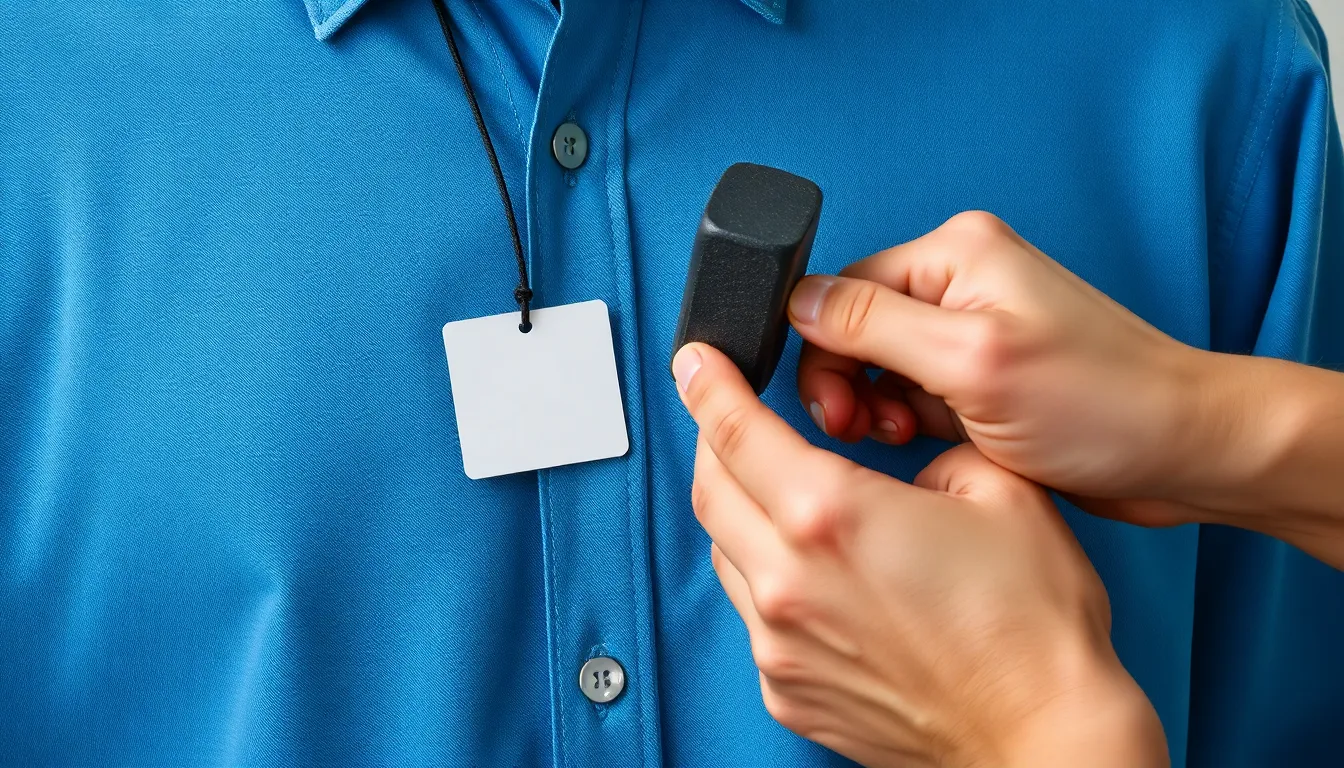Security tags can be a real hassle, especially when they cling to your new purchases. Whether it’s a stylish shirt or a gadget you can’t wait to use, the last thing anyone wants is to walk around with a tag that screams “shoplifter.” Understanding how to remove these pesky tags safely and effectively can save time and frustration.
While the ideal solution is to have a store employee remove it, sometimes that’s not an option. In this guide, readers will discover practical methods to tackle this issue. From using common household items to understanding the different types of security tags, they’ll find the information they need to get back to enjoying their purchases without the unwanted accessory.
Table of Contents
ToggleUnderstanding Security Tags
Security tags play a vital role in retail environments. They deter theft and help protect store inventory.
Types of Security Tags
Security tags vary in design and function. Common types include:
- Hard Tags: These plastic tags contain a metal pin, which attaches to merchandise. Hard tags often activate alarms at store exits.
- Soft Tags: These thin, flexible stickers adhere to items. Soft tags utilize ink-filled capsules that break if removed improperly, staining the product.
- Bottle Security Tags: Designed for liquor and costly beverages, these tags often require special tools to detach from bottle necks.
- Clamshell Tags: These encase items completely, protecting high-value products. They also require specific methods or tools for removal.
Purpose of Security Tags
Security tags serve several key purposes. Their primary function is to prevent theft in retail spaces. Tags provide a visible deterrent for potential shoplifters. They also facilitate inventory control by ensuring products remain secure until purchase. Additionally, triggering alarms alerts staff to suspicious activity. Retailers rely on these tags to minimize losses, enhancing store profitability.
Common Methods to Remove Security Tags


Various methods exist for removing security tags. These approaches range from manual techniques to specialized tools, catering to different tag types and user preferences.
Manual Methods
- Twisting the Tag: Grasp the tag firmly and twist it back and forth. This method works well for some flexible tags, allowing them to disengage from the garment.
- Pulling on the Tag: For specific soft tags, gently pull the tag away from the item while applying pressure. This can sometimes release the clip securing it to the product.
- Freezing: Place items with security tags in the freezer for a few hours. Cold temperatures can cause some materials to become brittle, making it easier to break the tag.
- Using Adhesive Remover: Apply a small amount of adhesive remover to weaken the bond between the tag and the fabric. Allow it to penetrate for a few minutes before attempting to remove the tag.
Using Tools
- Rubber Mallet: Strike the tag lightly with a rubber mallet from different angles. This shock can disrupt the locking mechanism, allowing easier removal.
- Scissors: Carefully cut around the tag’s base where it attaches to the item. Precision is crucial to avoid damaging the product.
- Screwdriver: Use a flathead screwdriver to pry open specific hard tags. Insert the blade along the seam and gently twist to create a gap.
- Tag Remover Tool: Invest in a dedicated tag removal tool. These devices often feature specialized tips designed to disengage various tag types without damaging the attached items.
When to Seek Professional Help
In some situations, seeking professional help for security tag removal is the best option. Certain conditions warrant this approach to ensure safety and efficiency.
Security Tag Removal Services
Security tag removal services offer specialized assistance in safely detaching tags from items. Professional store employees or locksmiths possess the training and tools necessary to handle various tag types without causing damage. Many retailers provide this service on-site, allowing customers to return to the store for removal. Other options include third-party services that focus solely on this task, ensuring customers receive expert help when faced with stubborn tags.
Risks of DIY Removal
DIY removal of security tags poses several risks, including damage to the item, personal injury, or legal issues. Attempting to remove tags with improper tools can lead to scratches or other damages to clothing or gadgets. Additionally, certain methods, such as using excessive force or heat, can cause physical harm, including cuts or burns. Finally, attempting DIY removal may raise suspicions of theft, resulting in unwanted confrontation. Seeking professional assistance minimizes these risks, ensuring a safe and problem-free experience.
Tips for Preventing Security Tag Issues
Preventing security tag issues begins before making a purchase and continues after you’ve taken the item home. Implementing best practices reduces the chances of encountering stubborn tags.
Before Buying Products
- Inspect Items: Check items for any visible security tags before purchasing. Make sure the tags are attached correctly and won’t impede your use.
- Ask About Tag Removal: Inquire at the store about their tag removal policies. Some retailers may offer immediate assistance if tags are mistakenly left on.
- Consider Purchase Location: Select stores known for efficient inventory handling. Retailers with robust anti-theft measures often manage these tags more effectively.
- Evaluate Returns: Understand the return policy. Some stores may remove tags at the time of return, simplifying the process if needed.
After Purchase Care
- Store Receipts Safely: Keep your receipt to verify purchases if a tag remains on an item. Having proof of purchase assists in potential tag removal.
- Contact Store Promptly: If a security tag remains on an item, contact the store immediately for removal assistance. Early notification can expedite the process.
- Follow Care Instructions: Adhere to care instructions for the item, especially if attempting a DIY removal method. Certain products may react unexpectedly to chemicals or tools.
- Utilize Careful Handling: Handle items with care when transporting them home. Excessive force during handling can inadvertently activate security features.




